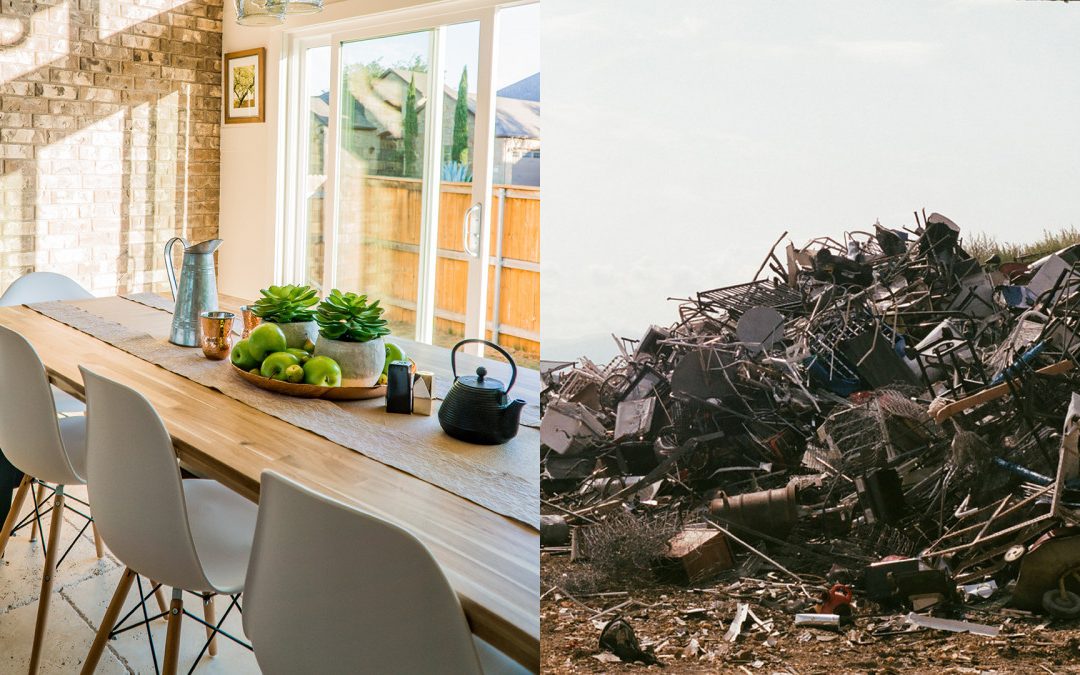80-90% of the 10 million tonnes of furniture discarded in the EU is landfilled or incinerated. Photo: Pexels/Pixabay
The interior design sector is a bit forgotten when discussing sustainability and environmental effects. But despite many obstacles there are good examples of businesses in this sector working with sustainability. And in a new report among the Swedish examples we find Retuna and IKEA.
The highest levels of CO2 emissions in the furniture life cycle come from the raw materials extraction phase. On top of that, furniture generates high volumes of waste. About 80-90% of the 10 million tonnes of furniture discarded in the EU is landfilled or incinerated. Among European consumers their textile consumption has the fourth-highest environmental impact, after food, transport and housing. The bulk of textiles consumed in Sweden are produced outside the EU, 79% of emissions associated with their production are emitted in other countries.
But the emissions and the waste can be reduced drastically with new more sustainable business models. A previous study of environmental impacts from office furniture demonstrates that new business models, such as circular business models, can potentially reduce CO2 emissions associated with the furniture life cycle by 50%.
Furniture sector plays a key role in EU
In a new report by researchers Oksana Mont, Matthias Lehner and Heather Schoonover at Lund University, concrete examples are given on how successful sustainable business models in the furniture and home textile sector can look.
– The furniture sector plays a key role in EU’s economy and has many opportunities to reduce its significant environmental impacts, says Oksana Mont, professor in sustainable consumption governance at Lund University.
– It is also a sector where many exciting examples of business model innovation are starting to occur, including circular business models, renting and sharing.
What’s new that we didn’t know before in this report?
– One conclusion that was a bit surprising, is that it’s not only manufacturers of furniture and home textiles that introduce new business models, but other actors from the public sector, interior design companies and recently started businesses that open up new markets by creating innovative and often sustainable business models.
Do you have an example of this?
– Retuna is the world’s first recycling mall, L2Go offers streaming services for bathroom textiles, Beleco offers subscriptions to furniture, Off2Off is a market place for furniture recycling in the public sector, IKEA is testing recycling services at Retuna and is developing other circular solutions for furniture.
The authors of the report also identifies a number of trends that further supports the sustainable development of the home interior industry, such as increased acceptance and demand for recycling and reconditioning (that is to repair and freshen up) and also renting and sharing of home textiles and furniture.
– These companies, together with broader trends that point to an increased interest in these questions, can work as inspiration to others and help integrating these business models in interior design and other sectors, says Oksana Mont.
THE REPORT:
Read the whole report Business models for sustainable consumption here.
CONTACT:
Oksana Mont, Professor in sustainable consumption governance, IIIEE, Lund University.
Phone: +46 46 222 0250
oksana.mont@iiiee.lu.se
Matthias Lehner, Postdoctoral Fellow, IIIEE, Lund University
Phone: +46 46 222 02 07
matthias.lehner@iiiee.lu.se
